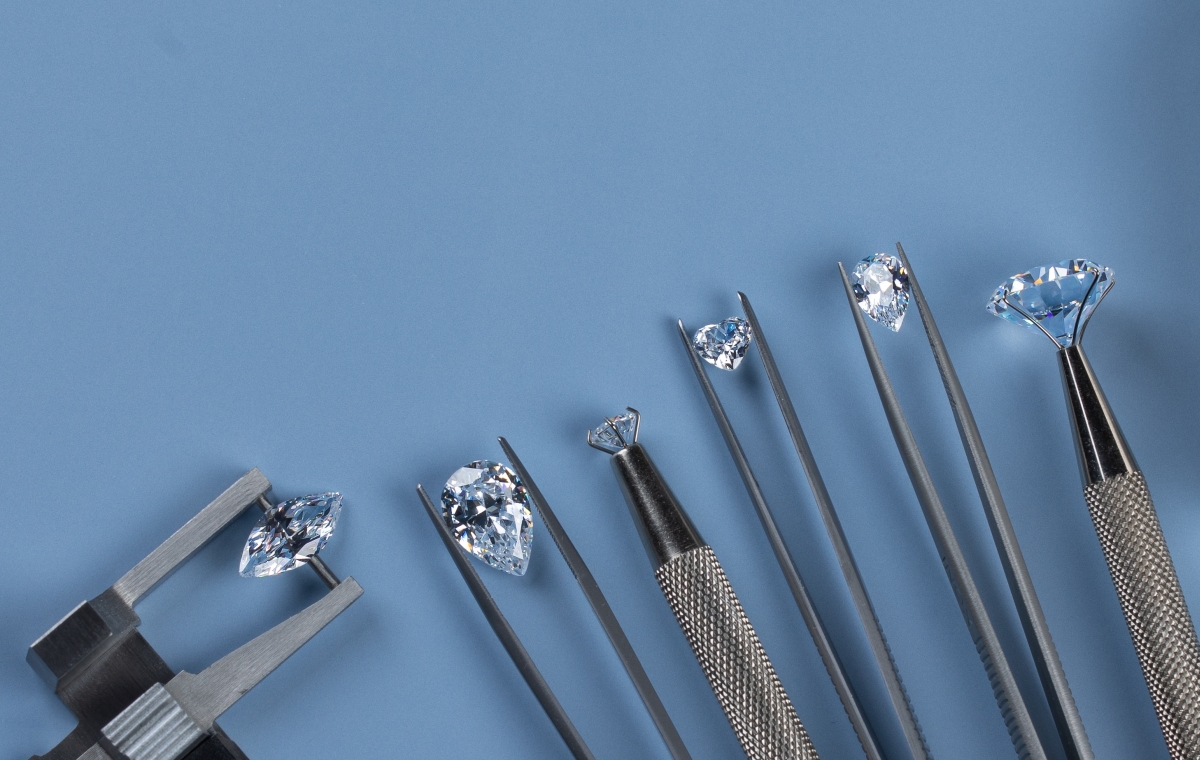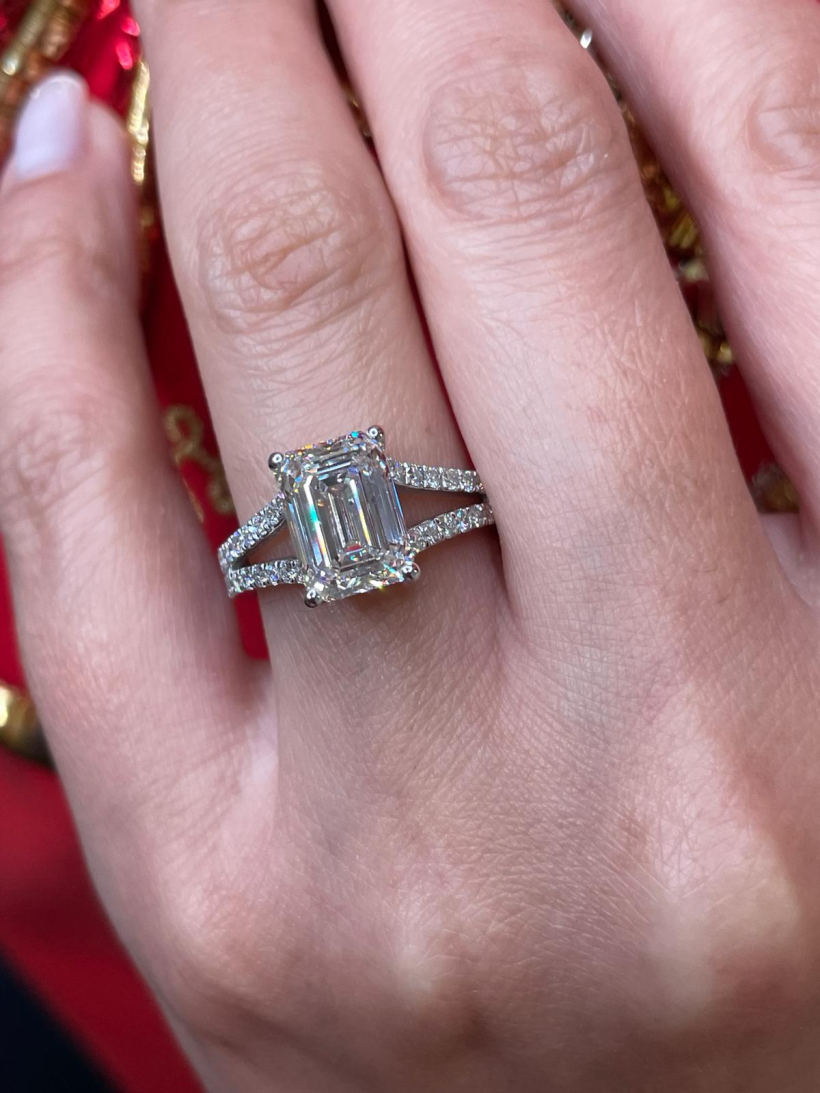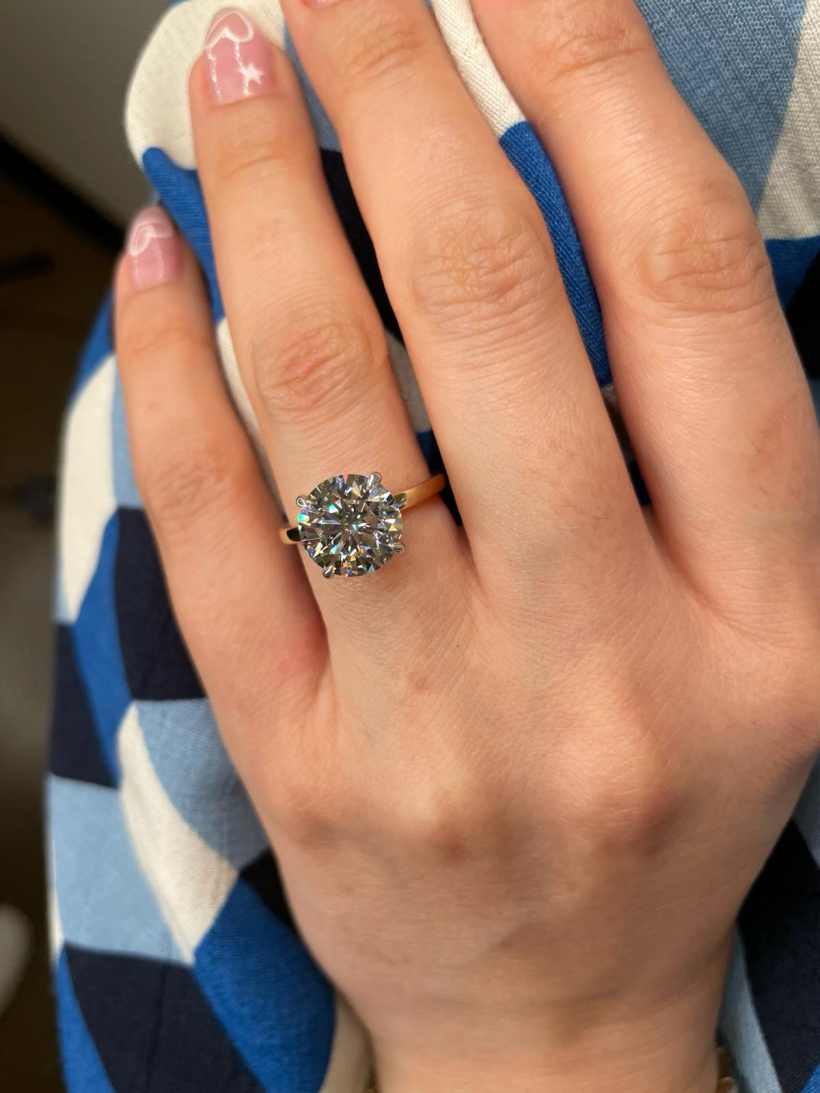Shopping for diamond jewelry can be exciting, but it can also be a little overwhelming, especially if you don’t know the lingo. There are a lot of different ways of categorizing unique “types” of diamonds; there are highly technical categories to consider, and there are slightly less technical categories related to the size, shape, color, and weight of a diamond, as well as the way in which the diamond was created. As you can see, there’s a lot to learn right from the start!
Fortunately, we’re here to help. In this guide, we’ll go over all of the most important types of diamonds and answer common questions related to all kinds of diamonds. So, let’s get started!
The 4 Types of Diamonds
When evaluating the basic composition of a diamond, experts use 4 specific categories. These categories generally refer to the absence or presence of impurities, as well as certain structural characteristics of the gemstones. In the sections below, we’ll take a closer look at each category:
Type Ia Diamonds
Type Ia diamonds are the most common type of diamond in existence. You are likely to see Ia diamonds in jewelry shops all around the world. But what does Ia categorization even mean? In essence, type Ia diamond contains nitrogen atoms, which are seen as a common type of impurity since diamonds are made almost entirely of carbon. Type Ia diamonds typically have a yellow or light brown color (as a result of the nitrogen). Due to their wide availability, type Ia diamonds are often the least expensive to buy.
Type IIa Diamonds
Type IIa diamonds contain absolutely no impurities. They are chemically pure, which means they are entirely made of carbon. This typically results in brilliant, colorless diamonds that are very rare and valuable. Type IIa diamonds are often larger, and may come in unique shapes depending on the degree of pressure and temperatures they were exposed to. You are less likely to encounter a type IIa diamond in a jewelry shop, but if you do, you’ll have to pay a lot more to get it.
Type Ib Diamonds
Type Ib diamonds are like Type Ia insofar as they contain nitrogen. However, Type Ib diamonds contain nitrogen in isolated clusters, as opposed to nitrogen that is scattered throughout the stone. The unique disbursement of nitrogen atoms can also affect the color of the diamond. Depending on how the nitrogen is clustered, Type Ib diamonds can range from light yellow or brown to fancy colors like red or green. Though not nearly as common as type Ia, type Ib diamonds can be found in nature and are not considered especially rare.
Type IIb Diamonds
Type IIb diamonds are one of the more interesting types of diamonds because they contain boron. The vast majority of diamonds contain nitrogen, so this makes type IIb diamonds very rare by default. Boron being present in a diamond has the effect of creating a blue or gray color, both of which are rare in diamonds. For example, the most famous and valuable diamond in the world, the Hope Diamond, is a type IIb diamond.
Different Ways of Categorizing Diamonds
If you’re shopping for diamonds, you’re probably not all that concerned with the technical “types” of diamonds outlined in the previous sections. Unless you’re a collector, you’re going to be more concerned about what the diamond looks like and how much it costs, not what type of impurities are or are not present. So, let’s take a look at some different ways of categorizing diamonds when you’re ready to make a purchase:
Natural vs. Lab Diamonds
The first thing to consider when shopping for diamond jewelry is how the diamond was created. Natural diamonds are formed in the Earth (or even in space) over millions of years, often as a result of high degrees of pressure, high temperatures, or high energy in carbon-rich gas clouds. In any case, natural diamonds are comparatively rare because they take so long to create and must be discovered in the natural world. This also means that natural diamonds tend to be more expensive.
Alternatively, lab diamonds are made in a lab by reproducing the circumstances in which natural diamonds are formed. Lab diamonds are typically made using one of two processes: High Pressure High Temperature (HPHT) or Chemical Vapor Deposition (CVD). In either case, gemologists can speed up the formation process to turn a small “seed” diamond and carbon into a much larger diamond. Lab diamonds are considered to be less rare, but also more ethical and environmentally-friendly than natural diamonds. Even though lab diamonds tend to be less expensive than natural diamonds, it’s important to point out that they are compositionally identical and are, in fact, “real” diamonds (not synthetic).
The 4 C’s of Diamonds
Once you decide between natural and lab-grown diamonds, you’ll need to learn all about the 4 C’s of diamonds. These are perhaps the best-known characteristics of diamonds, and help gemologists, jewelers, and consumers differentiate between diamonds of varying quality. The 4 C’s of diamonds include:
- Cut - The cut of the diamond is another way to refer to the shape. Rather than simply putting a natural diamond into a ring in its original form, jewelers cut diamonds into specific shapes to take advantage of their best qualities. The type of cut doesn’t only determine the shape of the diamond, but also its ability to reflect light and sparkle. Some of the most common diamond cuts include the Princess Cut, Round Cut, Cushion Cut, and Emerald Cut.
- Color - The natural color of a diamond is graded on a scale from D (colorless) to Z (yellow or light brown). Colorless diamonds are much more rare and valuable, but it’s also important to remember that diamonds can have fancy colors like blue or purple, which can also make them more rare and valuable.
- Clarity - Clarity refers to the presence or absence of inclusions. Inclusions are internal or external blemishes or impurities. Most inclusions cannot be seen by the naked eye, but require careful examination with a magnifier. Diamonds with fewer inclusions are generally more expensive than diamonds with more inclusions, as more inclusions are common and can take away from the gemstone’s brilliance and shine. Clarity is graded on a scale from FL (flawless) to I3 (Very, Very Included).
- Carat - Finally, Carat refers to the size and weight of a diamond. A larger diamond will weigh more and will generally be more valuable, whereas a smaller diamond will weigh less and cost less. But again, when determining the value of a diamond, you must consider all 4 C’s (cut, color, clarity, and carat) together.
How to Buy or Sell Diamonds Online
Are you looking to buy a quality diamond ring online? Or do you want to sell an old diamond ring that you no longer use? Either way, HYSTR is the largest and most reputable marketplace for pre-owned diamond jewelry. We make it easy for buyers to browse through thousands of diamond pieces to find the one they like and place a bid. At the same time, we ensure that buyers are protected by authenticating each piece before a sale. We also work hard to make our platform friendly to sellers, who can sell jewelry on their own terms and negotiate prices directly with buyers.
We hope you enjoyed our guide on the different types of diamonds! Are you currently trying to buy or sell a used engagement ring? If so, be sure to contact HYSTR today!








